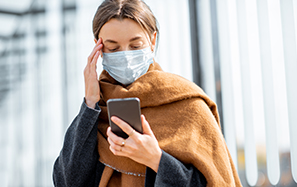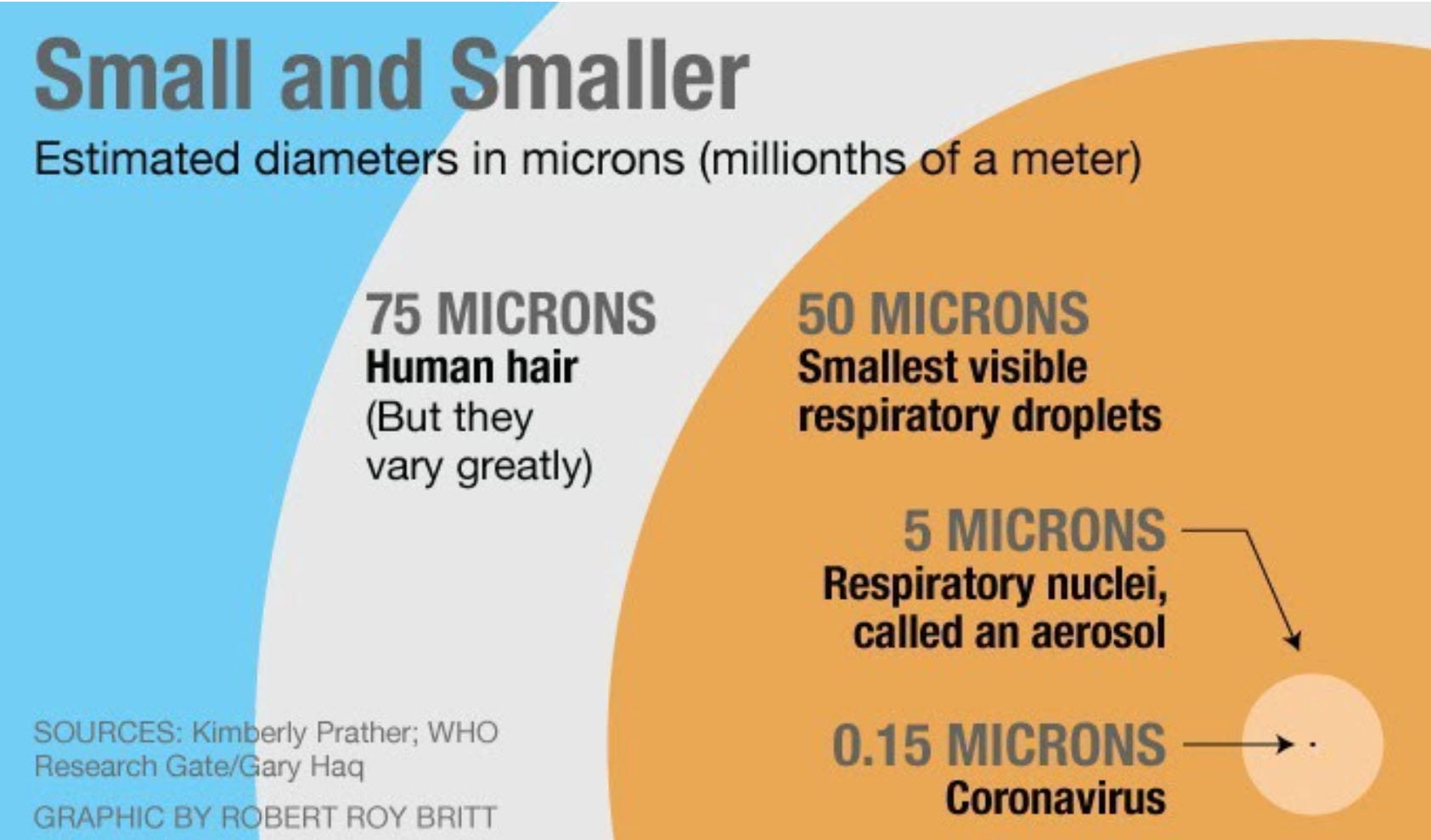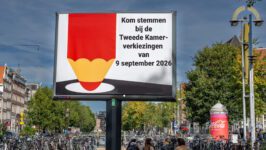Aerosol transmission has been gaining traction in communities of science, politics and media all over the world, but the Netherlands is lagging behind. This article provides an overview of these developments and warns about the consequences if the Netherlands fails to get with the program.
Lees volledig artikel: Is there a unique Dutch Covid-19 variant?
Is there a unique Dutch Covid-19 variant?
The Netherlands is unique
When I look at the international scientific developments and the position in the Netherlands of the RIVM and OMT and many media, I have the feeling that we have a unique Covid-19 variant in the Netherlands that behaves differently than in other countries.
Because very little use is made of findings abroad. And they are starting research, which has already been done abroad.
It is best to see this in relation to the subject of “aerosols”. While in the US and Germany, for example, aerosols are playing an increasingly prominent role among scientists working on Covid-19, as well as among leaders such as Merkel, this is not the case in the Netherlands. Would it really be the case that Covid-19 is spreading in the Netherlands in a different way than there? Perhaps it is because we are such a flat country with hardly any hills.
No, it can’t be, because Covid-19 also struck in Limburg and much less in Groningen.
It has nothing to do with a unique Covid-19 variant, but apparently with the culture in the Netherlands. We often think we are international minded, but we hardly look across the border. While at the end of February there was a major outbreak in Gangelt, 10 kilometers across the German border near Sittard, in such a way that on the 28th of February they did a kind of lock down in that region (Heinsburg), we hardly heard anything about it in the Netherlands. And of the special research results of Prof. Streeck, who subsequently did research there, we heard almost nothing either.
One of the consequences is that we either take the wrong measures or take them too late. And that we end up at the back of the queue if we want to use relevant resources in relation to the fight against this virus. (As with mouth protection and testing).
With regard to the important way of spreading Covid-19 via aerosols, the same is the case.
With the exception of East Asia, this subject was nowhere on the agenda of the national CDCs (the umbrella name of the RIVMs). But that is clearly changing now. Except in the Netherlands. Yes, the National Institute for Public Health and the Environment (RIVM) is now willing to pay attention to ventilation, but they are succeeding in naming aerosols in an unprecedented way. Such that the press conferences of Rutte and De Jonge in August did not address this subject. And by the way, the journalists in attendance did not ask any questions about it either.
Heinrich Heine must have said “when the flood comes, I’ll go to the Netherlands, because that’s where everything happens 50 years later”. Nowadays everything happens faster than in Heine’s time, so let’s hope it’s not 50 years now, but 50 days.
I want to use the work of Prof. Jose-Luis Jimenez from Colorado to go a little deeper into the subject of aerosols, so that you know what will become known in the Netherlands sometime in the next 50 days.
Prof. Jimenez and his companions
I have had the pleasure of being in close contact with Prof. Jimenez for several months now. He is one of the leading scientists in the field of aerosols. Here you can see his impressive resume.
Other aerosol experts whose work I have been following since March are Linsey Marr, Kimberley Prather, and Shelley Miller. I’ve also spoken to Prather at times.
Linsey Marr had already had a series of impressive publications on flu and influenza since 2010. Here is a good overview article of her work in the New York Times. In 2011 she had published an important study on the important role of aerosols regarding influenza.
In the U.S. a big turnaround took place on the subject of aerosols and the approach to combat them in a good way. (something I also see in Germany) is a merit of the four professors mentioned and some of their companions. Until the end of May they too, like me in the Netherlands, barely got a foothold in the main stream media to share their knowledge about aerosols and their relevance to Covid-19 with the general public.
The reason was the same as in the Netherlands: the WHO and the RIVM stated that the virus was spread through direct contact and aerosols played little or no role. And all prominent virologists and epidemiologists in the media shared this opinion, and the media gave virtually no room for other opinions.
Those four professors were in fact initially approached in the same way in the US as I was in the Netherlands. They weren’t a virologist or an epidemiologist after all! So how could we say anything relevant about the spread of the virus?
All conversation killers:
- Who says there’s virus in those aerosols?
- Who says that if there is a virus in the aerosols it can still multiply?
- Measles does go through the air and has a much higher reproduction factor than Covid-19, so the latter does not go through the air.
- And even if it does play a role, it is much smaller than direct contact.
Then with the mantra “Just keep enough distance so you can’t infect others”.
The big turnaround
All four were active on social media, but Prof. Jimenez was most active. He was tireless in explaining how aerosols work and where the arguments against aerosols were weak. Partly due to his work there, a clear turnaround is made in the US.
Various important media (such as the New York Times) began to give space to the scientists who pointed out the importance of aerosols. The letter that the 239 scientists wrote to the WHO, and in particular the description of how the WHO had not taken their knowledge seriously for quite some time, caused a shock. Especially when you read the description of the WHO’s disdainful attitude towards this subject in the New York Times.
And since then you see more and more aerosols playing an important role in the media. The accumulation of all this was a congress last Wednesday and Thursday of The National Academies of Sciences, Engineering and Medicine.
All the important people were present there. Fauci opened the congress. And there was a great presentation by Linsey Marr, which will be online soon.
Aerosols
I’m convinced that in the US policy now the fight against aerosol contamination will play an even more important role. Something I also see in Germany. At the end of May Merkel’s advisor Prof. Drosten already recognized that aerosols probably played a more important role than direct contamination. Merkel emphasized the importance of aerosols in her press conference.
And the German states are now very active in doing what the Netherlands could have done from the middle of June if they had taken over my Delta Plan Ventilation. I’m really afraid that the Netherlands is not only going to act too late and too slowly on that point. But also that, with regard to important physical components, such as CO2 meters, air filters, etc. the Netherlands will act too late, because there will be a worldwide shortage.
Prof. Van Dissel seems to be characterologically incapable of changing his opinion. At the most, he pushes it up a bit, but then it still has to seem that it was something he actually always thought it was. Fortunately that is no longer the case in the US and Germany.
Jimenez’ explanation about aerosols
Prof. Jimenez has written many pieces, one of them last week in Time. And on Twitter he also reacts very adequately to those who still follow the old direction of the WHO and the current line of the RIVM. (@jljcolorado)
At the end of this blog you will find a series of links to his work which is accessible information.
Below is a summary of a recent publication of his work in Medscape. “Why Arguments Against SARS-CoV-2 Aerosol Transmission Don’t Hold Water” (I have been well assisted by Bram Pieters).
The approach of that article is: How long-standing misconceptions cloud the current discussion about aerosols. Before showing that summary, a picture by Kimberly Prather regarding the relative sizes of droplets and aerosols is shown below.
This is the summary:
We know that the COVID-19 virus is transmitted via ejected droplet(s). These droplets come in many shapes and sizes, from large to extremely small. These last very small droplets are also called aerosols, because – unlike larger droplets – they can (long) float in the air and cover a considerable distance. The WHO defines aerosols as “floating” droplets smaller than 5 µm (that’s 5 micrometers); larger “falling” droplets fall quickly to the ground due to gravity, often within 1 meter of the source person. And because it is mainly these large “falling” droplets that, according to the WHO, transmit the COVID-19 virus, keeping at least 1.5 m distance is advised.
Clearly, one could say, that this definition of aerosols by the WHO is based on a long-standing misconception. Physically, droplets that fall to the ground so quickly turn out to be at least 50 µm, more than 10 (!) times as large! To drop droplets of 5 µm as stated by the WHO, gravity on earth would have to be 100 (!) times greater than it actually is. In reality, a 5 µm drop can remain floating in an interior space for up to 30 minutes. In other words: the droplets that are emitted, a substantially larger part behaves like aerosols than currently assumed by the WHO.
Now you can say that this is all just a question of definition. According to the WHO, the effectiveness of social distancing (e.g. keeping a distance: in countries all over the world varying between 1-2m; in the Netherlands 1.5m) proves that the transfer of COVID-19 mainly concerns those falling drops. After all, this effect wouldn’t be there if the contamination was mainly via aerosols, would it? Unfortunately, this statement is also based on an important misconception. It is not true that aerosols would not play any role within this distance!
Smoking
Ejected aerosols are most concentrated right in front of the nose and mouth, after which they are gradually dispersed and diluted by air. Similar to a smoker blowing smoke out: when you’re 1 meter away from (opposite) a smoker, there will be a lot of smoke between the two of you, at a further distance from the smoker you’ll be much less bothered by the smoke (provided the space you’re in is sufficiently ventilated!).
The above comparison with smoking clearly shows that keeping a distance does help against aerosols. In fact, when you physically study the behavior of droplets, the potential transmission when simply talking through aerosols is already dominant above “falling” droplets at a distance of only 20 cm! The ratio for potential transmission via aerosols with respect to “falling” droplets quickly rises to 100x at a distance of 0.5 meters, and 2000x at a distance of 1 meter! You can even say that the chance of getting infected by “falling” droplets at a short distance is very small!
Aerosols, in turn, will not quickly lead to contamination at a greater distance due to spreading and dilution, but eventually can if we “help” them (as in the smoke example) with indoor spaces, low ventilation, long duration, group formation, singing or shouting, and not wearing mouth caps. The example of talking in close proximity is particularly relevant here, as a significant portion of the infection appears to be from asymptomatic and presymptomatic sources, which often do not sneeze or cough.
Large droplets
Taking into account all of the above, one can only conclude that the much-heard argument that the effectiveness of social distancing is the conclusive proof that the transmission of COVID-19 is mainly via large droplets, and therefore not via aerosols, is incorrect. In fact, it is exactly the other way around: the best evidence we have is that aerosols are important in the transfer of COVID-19, and may even be the most important.
So much for the summary of the article by Prof. Jimenez.
What is important to realize after this explanation by Prof. Jimenez is that in order to really get infected by aerosols, the amount you breathe in and get into your lungs is the most important part. This seems to take quite some time, even when talking face to face with each other at a short distance. (Depending on both the amount of virus that the infectious person spreads and the condition of those who breathe in the aerosols).
This is a link to a document where you will find his arguments about aerosols in detail.
And this is his spreadsheet where you can make calculations about the risks of breathing in the virus for some specific situations. A short introduction to it. And here a larger explanation via a webinar. Plus a Q&A about it.
You have just read: Is there a unique Dutch Covid-19 variant?
Maurice de Hond on Twitter | Facebook | LinkedIn | YouTube.
If you would like to support our work financially with a small donation click here.








